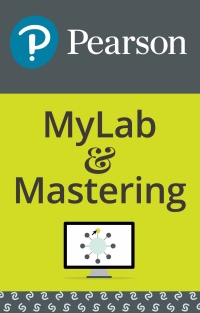Answered step by step
Verified Expert Solution
Question
1 Approved Answer
Inventory Valuation The Scenario: It is a wine industry, and the issue is inventory valuation. Please assume that wholesale and retail prices for expensive French
Inventory Valuation The Scenario: It is a wine industry, and the issue is inventory valuation. Please assume that wholesale and retail prices for expensive French red wines (for example, those from Bordeaux) have declined significantly over the past four months. You are to write a letter to Romano Wine Company that outlines the scenario, identifies the accounting issue, and proposes a solution. Specifically, you must address how the Bordeaux red wines will be valued on the May 31, 2004 balance sheet and how that this will impact both the 2004 and 2005 income statements. Note: You read the balance sheet date correctly--it is May of 2004. The dates and periods of time are very important in this case. Therefore, assume that you are looking into this issue on or about June 15, 2004. The Case: The Romano Wine Company is a relatively small, family owned San Francisco company that distributes wine to restaurants, general purpose liquor stores, and retail wine shops including many small boutique shops. Even though Romano is a Sicilian name, the company is known for its expertise with French wines, particularly the more expensive reds. Romano has been around since the early sixties and has survived as an independent distributor mainly because of personal relationships established and nurtured over forty years. One of these close, long-lasting relationships is with Wells Fargo Bank ("Wells"), who provides short-term financing for the companys inventory and long-term financing for the companys warehouse and offices. Wells has always wanted to see unaudited quarterly financial statements and audited annual financial statements all prepared according to US GAAP. Romanos most recent year-end is May 31, 2004 and the following scenario played-out in early June as part of the annual audit. Romano began to see soft prices for French reds late in 2003, which continued into the current year. In fact, wholesale prices (and soon after, the retail prices) really started to drop in early spring of this year. As of June 1, prices are down 30-40% from what they were in the fall of 2003 and the auditors have raised an issue about the valuation. Romano values its inventory using a weighted average cost basis and utilized the periodic inventory system. About a third of Romanos inventory at May 31, 2004 consisted of red wines from Bordeaux; these 2,100 cases of red wine were purchased at an average cost of $120 per case, and in normal times would sell for roughly $220 a case. The replacement cost of this inventory at May 31st, was $80 a case, and the current selling price is $146 per case. How should the Bordeaux reds be valued on the May 31st balance sheet and what is the impact, if any, on the 2004 income statement? What will be the impact on the 2005 income statement? Additional Information: 1) This is not the first time that wine prices have fallen (or risen) dramatically. (After all, grapes are a commodity even in the Bordeaux area of France!). Romanos general manager is kind of a wine historian and he says volatility like this happens at least twice each decade, and prices always bounce back. According to your research the main reason for the price drop is excess produce, especially the 1999-2001 vintages. As soon as the distribution channel is cleared (in other words as soon as the wine drinkers of the world start drinking this stuff) prices will return to normal. In fact, Romano thinks that prices have bottomed-out and will start to go back up by the end of the year, and may be very close to their 2003 levels by late spring 2005. 2) As we all know, if stored properly a good red wine will improve in the bottle. Obsolescence/spoilage is not a factor. 3) Romano likes to turn over its inventory about four times a year. Actually, they dont have a choice, because they dont have a lot of excess cash. They must keep their business cycle at a reasonable length. However, this whole industry, from growers to distributors to retailers, is characterized by slow payers. Romano, itself, seldom pays less than then 90 days after delivery! On the other hand, businesses eventually pay. A time-honored, unwritten code of conduct is very much evident in this industry. 4) Romanos sales for the year ended 5/31/04 were $2.1 million, and net income was 120,000. Sales, net income, and cash flow from operations were all less than what they were for year ending 5/31/03. The following is the companys balance sheet as of 5/31/04. Romano Wine Company Balance Sheet May 31, 2004 Cash 85,000 A/P 450,000 A/R (NRV) 500,000 S/T Debt 500,000 Inventory 750,000 L/T Debt 875,000 PPE (NBV) 950,000 Equity 460,000 Total 2,285,000 Total 2,285,000 5) Assume the current FASB Codification text is the accounting guidance in place during the case timeframe
Step by Step Solution
There are 3 Steps involved in it
Step: 1

Get Instant Access to Expert-Tailored Solutions
See step-by-step solutions with expert insights and AI powered tools for academic success
Step: 2

Step: 3

Ace Your Homework with AI
Get the answers you need in no time with our AI-driven, step-by-step assistance
Get Started


